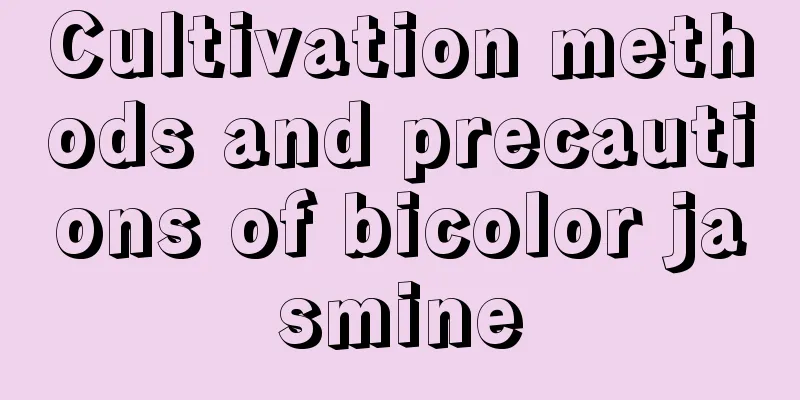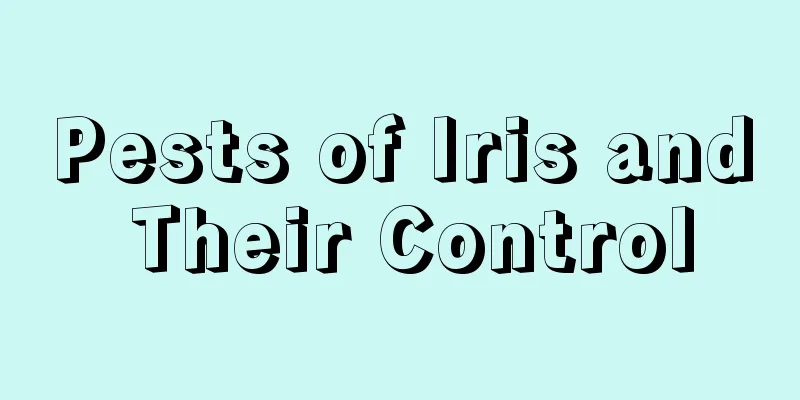Cultivation methods and precautions of bicolor jasmine

1. Maintenance methods1. Temperature: Between 18 and 30 degrees is more suitable. Within this range, it will grow vigorously and bloom easily. In winter, it is best to keep it indoors and keep it above twelve degrees. Below twelve degrees, it will go dormant. If it is lower, it will suffer frost damage. 2. Light: If it is grown indoors, the lighting conditions must also be guaranteed, preferably not less than four hours a day. However, the light cannot be too strong, otherwise its leaves will wilt. 3. Watering: Since bicolor jasmine is afraid of waterlogging, do not water it too much. Therefore, during its growth period, it is better to keep the soil in the pot in a semi-dry state. In winter, if the temperature is below twelve degrees, there is basically no need to water the plants. If the temperature is suitable, you can add some. 4. Soil: There are three main requirements for soil. One is that it should be rich in nutrients, one is that it should have good drainage, and the other is that it should be acidic. 2. Breeding techniques1. Reproduction: It is better to propagate by sowing. First, you need to select the seeds, and choose the plump seeds collected that year. Before sowing, high temperature sterilization is required. Then, choose the appropriate substrate, which also needs to be sterilized. After the seeds are soaked in warm water, they can be officially sown. You can use tools such as toothpicks to pick up the seeds and sprinkle them on the substrate. After sowing, ensure appropriate humidity. 2. Pruning: In spring, mainly prune its branches and leaves, cut off those that are too dense, and increase light transmission. After flowering, try to prune it, mainly cutting off the remaining flowers, so as to avoid nutrient consumption and promote further growth. 3. Problem diagnosis and treatment1. Disease: There may be "leaf blight". This disease is more likely to occur in summer. This is especially likely to happen in places with poor ventilation. You can use carbendazim for prevention and control, and pay attention to controlling the density. 2. Pests: Pest snails may occasionally appear. They can damage the leaves of the plant. You can spray pesticides to kill them. IV. Other issues1. Toxicity: It is non-toxic and does not emit harmful gases. Not only is it non-toxic, it also has a purifying effect. 2. Can it be kept at home: It can be kept at home. Moreover, it is quite appropriate overall. Bicolor jasmine can be placed as a potted plant indoors and is quite ornamental. |
<<: Zinnia cultivation methods and precautions
>>: The cultivation methods and precautions of the tower of Qian
Recommend
How to grow Amaryllis
1. Soil Try to use well-aerated soil. Generally, ...
How many days does it take for lettuce to germinate? How many days does it take for lettuce to germinate?
How long does it take for lettuce to germinate? I...
The most frequent blooming bougainvillea star ranking: which bougainvillea varieties are frequent bloomers and beautiful
Bougainvillea is a flower that many people like. ...
How to raise Jihuayue
1. Breeding environment 1. Soil: To grow chamaeja...
Orchid watering tips
There are many factors that affect the growth of ...
How to water oranges indoors in spring
1. How to water indoors When growing orange trees...
How to keep nasturtium plant short
1. Topping during the seedling stage Nasturtium g...
Which month is suitable for planting sweet potatoes?
When to plant sweet potatoes The planting time of...
Gardenia cutting method
1. Cutting time The best time to take cuttings is...
Anyone who has waste bottles, please give them to me! Use it to grow flowers, and the green radish will grow into a "green leaf column"
Today Huahua is going to introduce another little...
Causes and treatments of yellow leaves of dragon beard orchid
1. Proper watering 1. Reason: If you water the dr...
Plant-related scams
Plant-related scams: Roses sold in flower shops T...
Cultivation Techniques of Potted Cyclamen
1. Cyclamen sowing period The sowing period of cy...
How to grow succulents in summer
1. Spring, Autumn and Winter Types 1. Cooling The...
Characteristics of plum blossom
1. Appearance characteristics The height of the p...









